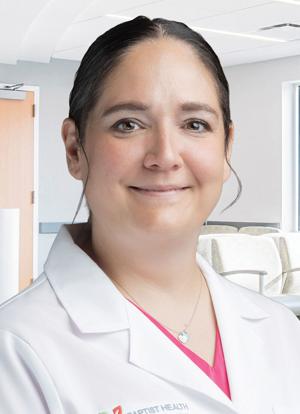A rare genetic mutation associated with cerebral cavernous malformations (CCM) appears to be unusually prevalent in New Mexico, raising concerns about neurological health in the region. In March 2021, four-year-old Sakura Tafoya experienced a severe health crisis after a seemingly innocent moment playing soccer. Following a header, she exhibited alarming symptoms, including slurred speech and difficulty standing. Her father, Jared Tafoya, recognized something was wrong and called for emergency assistance.
Sakura was rushed to Christus St. Vincent Regional Medical Center, where initial scans revealed a pool of blood on one side of her brain, a consequence of the malformations. According to the Alliance to Cure Cavernous Malformation, around 1 in 500 individuals possess at least one cerebral malformation, but most remain asymptomatic. Among those, approximately 20% have the inherited form of CCM, a rare condition that has become a significant concern in New Mexico, especially within families of Hispanic descent.
A Genetic Legacy in New Mexico
Dr. Tarun Girotra, a neurologist at the University of New Mexico Health Sciences Center, has noted a striking increase in patients presenting with CCM. “We see it every day. New Mexico sees it every day,” he stated, emphasizing that the mutation, particularly the CCM1 variant known as the Common Hispanic Mutation, manifests predominantly in this region. This genetic anomaly can be traced back to the early Spanish settlers, leading to a higher prevalence among their descendants.
In New Mexico, the CCM1 mutation accounts for at least 90% of familial cases of CCM. Dr. Leslie Morrison, a retired pediatric neurologist, explained that cavernous malformations occur when capillaries with abnormally thin walls cluster together, leading to leaky blood vessels. “Each clump of malformed capillaries looks like a mulberry in the brain,” she said, highlighting the potential severity of these lesions, which can result in seizures, chronic headaches, and even paralysis.
Sakura’s medical journey took a critical turn when her condition worsened, and she experienced seizures. She was airlifted to the University of New Mexico Hospital for more specialized care. Her mother, Kristina Tafoya, described the experience as surreal, recalling, “It was almost like watching a movie.” In the hospital, doctors discovered a cluster of blood vessels leaking blood into her brain tissue, confirming the diagnosis of a cavernous malformation.
Living with Cerebral Cavernous Malformations
The implications of living with CCM can be daunting. Dr. Morrison noted that the number of lesions in a patient can range from zero to hundreds, with each lesion posing a potential risk of bleeding. “Living with the idea that that could happen, it changes their lives,” she stated, underscoring the psychological burden on families affected by this condition.
Jared Tafoya’s own health issues surfaced earlier when he sought medical help for recurring headaches during his military training. Imaging revealed various spots in his brain and spinal column, although the connection to CCM was not initially made. The condition was later identified in a relative, leading to Jared undergoing testing that confirmed his diagnosis.
Cerebral cavernous malformations can be classified as either sporadic or genetic. While sporadic cases account for approximately 80% of occurrences, the remaining 20% are inherited in an autosomal dominant manner, meaning there is a 50% chance of transmission from an affected parent. The CCM1 mutation, particularly common in New Mexico, has been linked to a family history of neurological issues.
Despite the challenges, Sakura’s immediate health crisis stabilized, and her brain stopped bleeding within 24 hours. Doctors prescribed medication to manage her seizures and scheduled regular MRIs to monitor her brain for any new lesions. However, no cure currently exists for CCM, and treatments to prevent further hemorrhaging remain elusive.
Ongoing research at the University of New Mexico aims to explore potential lifestyle modifications that may alleviate some symptoms. Dr. Morrison mentioned that vitamin D supplements and other health-conscious choices can make a difference in managing the condition.
The New Mexico Legislature has recognized the need for further research, contributing over $600,000 to the University of New Mexico Health Sciences Center for CCM research and outreach. In 2019, lawmakers passed a memorial to study support for researching cerebral cavernous malformations, acknowledging the genetic mutation’s prevalence in the state.
As Sakura continues to navigate life post-diagnosis, she maintains a sense of normalcy, attending third grade and pursuing her dream of becoming a tattoo artist. Her mother has even started creating tattoo designs based on Sakura’s brain imaging results.
The Tafoya family remains vigilant, aware of the risks associated with head injuries. “We try not to limit her, but the fear of her hitting her head definitely makes us hold back,” Kristina Tafoya said. The prospect of another brain bleed lingers in their minds, emphasizing the ongoing challenges faced by families dealing with this rare genetic condition.







